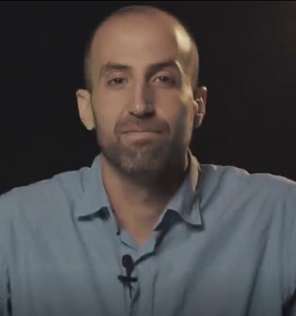Keynote Speakers
Ángel Conde
Data Analytics and Artificial Intelligence team leader at IKERLAN, Spain
Software reliability in the Big Data era with an industry‐minded focus
(Tuesday 8th)
 Short Bio.
Dr. Angel Conde is currently the Data Analytics and Artificial Intelligence team leader at
IKERLAN. He has focused on architecting and developing Big Data Platforms for various
research and industry projects since 2015. He obtained his Ph.D. in Computer Science (UPV/
EHU) for his work on Big Data, Natural Language Processing and Machine Learning
techniques in order to gather semantic knowledge from textbooks written in 2016 using
Wikipedia, with research visits to the Cognitive Computation Group of the University of
Illinois. Moreover, he holds a M.S. in Advanced Computer Systems (UPV/EHU). He is author
of many scientific articles on international journals and usually speaks on Industrial
Conferences such as Big Things or the Amazon Summit about different data‐related topics.
Finally, he has participated in different H2020 research projects such as SAFIRE, CREMA or V‐FOS.
Short Bio.
Dr. Angel Conde is currently the Data Analytics and Artificial Intelligence team leader at
IKERLAN. He has focused on architecting and developing Big Data Platforms for various
research and industry projects since 2015. He obtained his Ph.D. in Computer Science (UPV/
EHU) for his work on Big Data, Natural Language Processing and Machine Learning
techniques in order to gather semantic knowledge from textbooks written in 2016 using
Wikipedia, with research visits to the Cognitive Computation Group of the University of
Illinois. Moreover, he holds a M.S. in Advanced Computer Systems (UPV/EHU). He is author
of many scientific articles on international journals and usually speaks on Industrial
Conferences such as Big Things or the Amazon Summit about different data‐related topics.
Finally, he has participated in different H2020 research projects such as SAFIRE, CREMA or V‐FOS.
Abstract. In order to build reliable Big Data software, we should prepare ourselves to the distributed fallacy, “A distributed system will always fail”. In this way, Big Data systems have been architected for survival of multiple system failures from the ground up. We will make a little introduction about different Big Data frameworks and their architectural decisions in order to be able to survive to multiple system failures in order to be reliable.
Next, we will focus on the Industrial Internet of Things (IIoT). IIoT nowadays is an exploding trend with significant implications for the global economy. It spans industries including manufacturing, mining, agriculture, oil and gas, and utilities. It also encompasses companies that depend on durable physical goods to conduct business, such as organizations that operate hospitals, warehouses and ports or that offer transportation, logistics and healthcare services. Not surprisingly, the IIoT’s potential payoff is enormous. A specific example of this potential use is the Predictive maintenance of assets, saving over scheduled repairs, reducing overall maintenance costs and eliminating breakdowns up. For example, Thames Water, one of the largest providers of water in the UK, is using sensors and real‐time data to help the utility company anticipate equipment failures and respond more quickly to critical situations, such as leaks or adverse weather events. However, analyzing such large quantities of usually out‐of‐order real‐time data from different sensors and system is a real challenge with Big Data analytics frameworks.
The final part of the talk will be composed of a hands‐on workshop where we will use Apache Zeppelin, Apache Kafka, Apache Avro, Apache Cassandra and Spark´s Structured Streaming API to see how we can solve challenges of related to IIoT projects such as handling late unordered data.
All the code used along with the developer environment be available at GitHub right after the keynote.
Alfons Crespo
Institute of Automation and Industrial Informatics of the Universitat Politècnica de València, Spain
Why a hypervisor‐based approach is the best alternative for mixed‐criticality systems
(Wednesday 9th)
 Short Bio.
Alfons Crespo is a member of the Institute of Automation and Industrial Informatics of the
Universitat Politecncia de Valencia. The main research area is associated with real‐time
systems in the topics of scheduling, design, development, execution support and
virtualization techniques. He has also collaborated with control theory groups to conjugate
planning and control performance. The XtratuM hypervisor is one of the results obtained in
the projects that has been transferred to fentISS (UPV spinoff). He has participated in a large
number of research projects at European and national level. He has co‐authored more than
200 papers in journals and conferences in the field of real‐time systems. Teaching activities
include courses on operating systems, embedded systems and real‐time systems.
Short Bio.
Alfons Crespo is a member of the Institute of Automation and Industrial Informatics of the
Universitat Politecncia de Valencia. The main research area is associated with real‐time
systems in the topics of scheduling, design, development, execution support and
virtualization techniques. He has also collaborated with control theory groups to conjugate
planning and control performance. The XtratuM hypervisor is one of the results obtained in
the projects that has been transferred to fentISS (UPV spinoff). He has participated in a large
number of research projects at European and national level. He has co‐authored more than
200 papers in journals and conferences in the field of real‐time systems. Teaching activities
include courses on operating systems, embedded systems and real‐time systems.
Abstract. The increasing computational capacity of cyber‐physical systems (CPS) due to more powerful processors and, especially, multi‐core systems has caused their implementation in control systems to have a greater impact than initially expected. One of the consequences is the inclusion of a large number of CPS in the development of cars, airplanes, trains, etc. The need to reduce consumption, weight, wiring, etc., in these systems has led to the integration of the multiple functions performed in a system in a few computing platforms. In this line of development, hypervisors play a relevant role in the design, development and certification of the system. Hypervisors allow to integrate in the same computing platform the different functionalities that are performed in dedicated CPS. The aim of this presentation is to show that the use of hypervisors for CPS development presents fundamental advantages in the design, development and certification with respect to more traditional CPS systems.
Tucker Taft
Director of Language Research at AdaCore, USA
A sampling of Ada 2022
(Thursday 10th)
Short Bio. S. Tucker Taft is VP and Director of Language Research at AdaCore. His specialties include
programming language design, advanced static analysis tools, formal methods, real‐time
systems, parallel programming, and model‐based development. Tucker was lead designer of
the Ada 95 programming language, and is a member of the ISO Rapporteur Group that
developed Ada 2005 and Ada 2012. Tucker has also been designing and implementing a
parallel programming language called "ParaSail" and defining parallel programming
extensions for Ada as part of the forthcoming Ada 2022 standard.
Abstract. The forthcoming Ada 2022 revision of the Ada standard includes a number of significant new features, which together make the language more expressive and productive in a multicore context, while enhancing its safety and support for more complete abstractions with formal contracts. This talk will introduce these key new features with a series of examples:
- parallel loops and blocks, coupled with static detection of data races and potential blocking.
- iterator syntax for incorporating filters and user‐defined iterator procedures.
- libraries for atomic operations, including fetch‐and‐add and compare‐and‐swap.
- aggregates, literals, images, and map‐reduce for user‐defined types.
- libraries for arbitrary precision integer and rational arithmetic.
- more expressive contracts using delta aggregates and declare expressions.
- the Jorvik profile as the next step up from the Ravenscar profile.